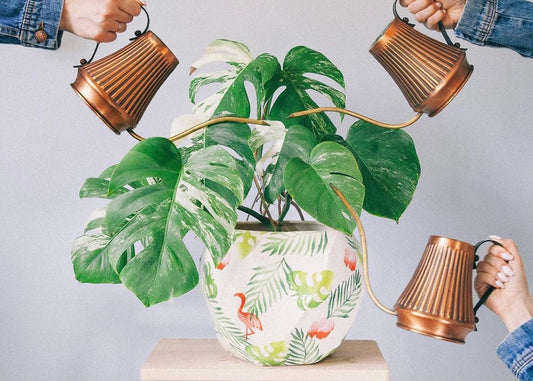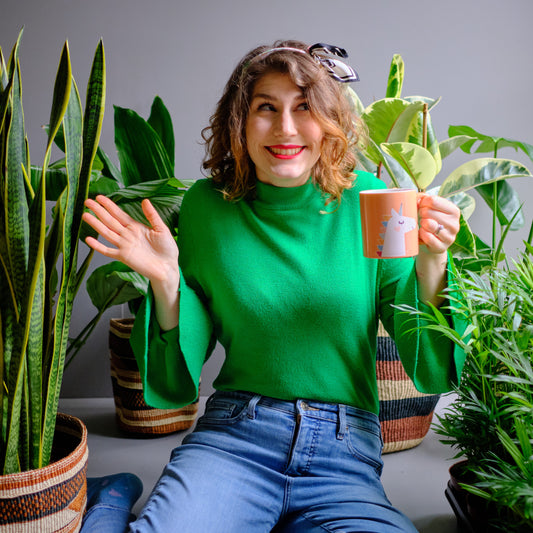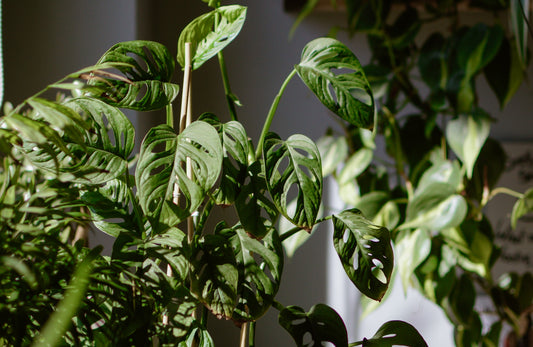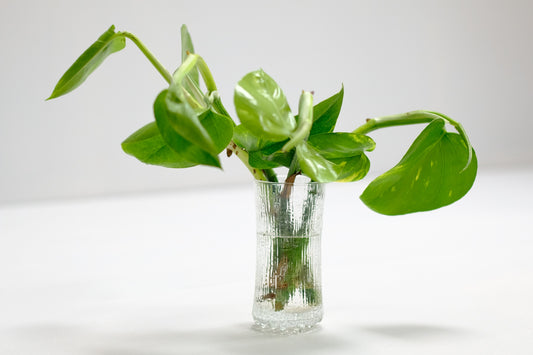How Much Light Does My Plant Need?
What does direct and indirect light mean? Will my plants survive in a very shady room? How much shade is some shade? How do I know if my plant is not getting enough light? There is a lot of confusing advice out there, and it can be frustrating. Keep reading for some truthful facts about plants and light.
Light is life
Plants, unlike us, are able to manufacture their own food. They do so using light energy from the sun to fuel a process called photosynthesis, which also produces oxygen for us to breathe (thank you, plants).
The amount of light a plant is exposed to affects the rate of photosynthesis, which in turn affects its growth.
It’s good to remember that, in their natural habitat, even in the shadiest corner of the rainforest, plants receive light from all angles. When a plant lives indoors, light is likely to come only from one source, such as a nice big window, and is greatly reduced.
Light levels glossary
Here is exactly what we mean when we talk about different types of light.
Direct light: There is no barrier between the plant and the sun rays coming from your window. Can also be referred to as “full sun”. Cacti and succulents need this type of light to thrive.
Indirect light: Light that has been diffused, by sheer curtains for example, or that has been obstructed by an object, like a tree or a building outside a window. Can also be referred to as “dappled light”.
The term “indirect light” encompasses different light intensities. To make our care guidelines simple, we have split it into “bright”, “medium” and “low”.
“Bright light” means plants receive plenty of filtered sunlight throughout the day. Most houseplants appreciate this type of light, but especially Fiddle Leaf Figs and Variegated Rubber Plants. “Low light” means plants are quite far from the window, in a dark, shady spot. No plant thrives in low light, but some plants have adapted to it. “Medium light” typically means plants are further away from the light source, maybe below a window, in soft or scattered shadow for most of the day. The further a plant is from the light source, the less intense the light will become. Ferns, calatheas and other plants that live under the umbrella of bigger trees, like this type of light and don’t do well in full sun, although they can handle small amounts of it (gentle morning sun is always appreciated).
The Gist
Plants need light, is like food for them. Before you buy a plant, learn about its light needs and determine weather you can meet them. It may seem a bit daunting if you’ve never had a plant before, but you can do it! Thankfully plants tell us when they need more, or less, light. Here’s what to look out for.
When there’s not enough light:
- Stems become very long and start to look “leggy” (bare)
- Growth (new leaves) are uneven and sparse
- Variegated plants loose their variegation
- Leaves might start yellowing
- Plant gets weaker and floppy
When there’s too much light:
- Leaves’ tips and edges start browning (might also mean it’s not humid enough for your plant)
- Leaves may start curling
- Soil dries up very fast (might also mean you have to repot your plant)
- Leaved are “scorched” or burnt by harsh sunlight and start yellowing (they are not floppy, but “crispy”)
If your plant is experiencing one or more symptoms listed above, don’t stress out. Finding the perfect spot for a plant is not always easy, so feel free to experiment and move your plant around until you find the perfect spot. Once you find it, leave your plant in its happy place.
Photo by @chlorofeelspace





